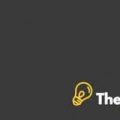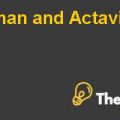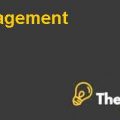Dick smith holding Case Study Solution
Introduction
Dick Smith was an independent company established in 1980 with the name of the owner Dick Smith. However, the company was acquired by another company in 1981. The company who acquired Dick Smith was Wool worths acquired Dick Smith’s equity stake of 60% in 1981 and the remaining 40% was purchased in 1983. Dick Smith was again sold to another company in November 2012.The second company who acquired Dick Smith was Anchorage Company but Dick Smith after the second acquisition soon went into liquidation and the administrators were given the company to recover their debt from the company. Anchorage paid $115 as the price for purchasing from Wool worths but due to poor management, the company did not keep up the pace and fell prey to administration.
Anchorage only paid $ 10-15 million of the total amount whereas the remaining amount was raised from the initial public offering made by the company after the purchase. In the liquidation, the creditors lost approximately Australian $260 million which is a huge loss to the creditors from the close down of the company.However, the shareholders lost their investments of Australian $344.5 million in total.
The company’s employees were made redundant and they were sacked and a huge number of employees lost their jobs.The no of employees who were made redundant was 3224.These employees included 466 people from NewZealand. The company’s investors should be vigilant and more careful about deciding their investments in any company or any organization.(Gaynor, 2016)(Knapp, 2016) (KEATING, 2016).
Accounting methods used by the Company
The first accounting treatment in dick smith was that the company made the fair value adjustments in the inventory and this, in turn, led to an increase in the inventory prices and hence would manipulate the accounts by showing a huge amount of profits with closing inventory with higher value.
The second accounting treatment adopted by dick smith was that the company sold the inventory at the fair value and this led to an increase in profits as the cost of sales decreased.
The third method used was that there should not be any purchase of inventory in the current year as this would tend to reduce the cost of sales of the company and this will increase the profits from the last year.
The fourth method was to purchase the inventory on the basis of the units which provide the greatest amount of rebates from the suppliers as this will reduce the cost of sales as purchases are cheaper and hence the cost of sales would decrease and profit would increase.
The fifth method was to hire an administrative accountant to keep the business operating but this was not of any value as the company closed many of its shops.
Purpose of the audit
The purpose of the audit is to provide the level of assurance to the economic users of the financial statements as the audit provides a guarantee that the financial statements are free from error. In the case ofDick Smith, the auditors did not notice the small mistakes in the accounts that made the company later collapse in the market.This indicated to the users of the audit report that the auditors did not see the financial statements or they did not conduct their audit with full competency with which they should have conducted the audit and later the company went into administration.
The auditor checks the accounts for any material misstatements and if the material misstatements are thought to have an adverse impact on the audit, then the auditor always discusses that matter with the management.However, if the management refuses to rectify those errors then the auditor has the independence to modify the audit report and form an opinion which leads to the modification of the report.Usually, the report is issued as a clean report because after the discussions with the management the management reconciles the figures with the accounts and then the auditor forms a clean report.
If the auditor is newly appointed or it is the first year of the audit firm then the auditor does not have the knowledge of the business so, the detection risk is always high in the first year of audit. The auditor sets the materiality level at the start of the audit and the materiality level is revised if the auditor thinks it is no longer valid for the audit due to the change in certain factors of the company.
The planning materiality is calculated for the whole financial statements whereas the performance materiality is calculated to check that the total of the uncorrected errors does not exceed the performance materiality level.Performance materiality is a percentage of planning materiality which is based on the judgement of the auditors. If the materiality level set is too low,it will lead to the financial statements being checked.Whereas, if the materiality level set is too high it will lead to some errors remaining undetected by the auditor as was the case with Dick Smith where the auditors might have set the materiality too high due to which the auditors did not check the inventory figure and hence a wrong opinion was formed in the audit report which led to Dick Smith company going into administration................
This is just a sample partial work. Please place the order on the website to get your own originally done case solution.












